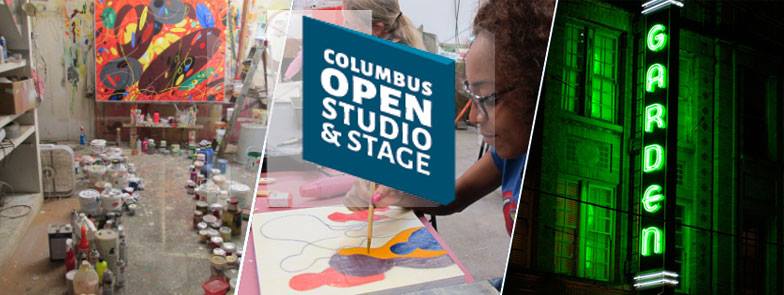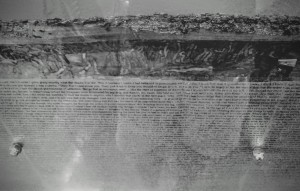Columbus Dispatch article By Ken Gordon on my piece in the “Beyond Limbs & Leaves: Rekindling UA Ash” art exhibit.
http://www.dispatch.com/content/stories/life_and_entertainment/2015/08/27/1-risen-ashes.html
For the first time in years, ash trees won’t make Steve Cothrel sad.
The superintendent of parks and forestry for the city of Upper Arlington has overseen the removal of more than 1,000 ash trees — cut down either as victims of the emerald ash borer or in a pre-emptive attempt to prevent the spread of the bug.
“It has been no fun, because I’ve known a lot of these trees for decades,” said Cothrel, a 26-year city employee.
“It has been really unpleasant for all involved.”
Because of that history, he is looking forward to a reception tonight at the Upper Arlington Municipal Services Center to celebrate the exhibit “Beyond Limbs & Leaves: Rekindling UA Ash.”
The show, through Oct. 23, includes the works of 10 central Ohio artists who were asked to imagine ways in which the ash wood could be brought back to life.
“The biggest contrast for me,” Cothrel said, “is that I will be in a room full of people who are feeling very positive about ash trees.”
A transplant from Asia, the borer burrows specifically into ash trees — resulting in the destruction of water- and nutrient-carrying tissue under the bark.
The suburb came up with a plan to deal with the ash borer in 2006, Cothrel said, and the insect arrived by 2009.
As trees were felled by the hundreds, Upper Arlington officials began talking about whether something positive might rise from the ashes.
Then, by 2012, the idea for an art exhibit had been finalized.
Artists were given pieces of wood — which might need several years of drying before it is carved.
“We wanted to display how ash could be seen in different ways by different eyes,” said Lynette Santoro-Au, manager of the Upper Arlington Cultural Arts Division.
The results are diverse.
Traditional woodworkers Paul Courtright of Delaware and Bruce Kerns of Pickerington, for example, created bowls, plates and containers of various shapes and styles.
Jake Seabaugh of Canal Winchester — who steams strips of wood, then bends them into shapes — produced a piece of wall art depicting a wooden daisy “growing” out of an ash log.
Other artists used the fate of the ash trees as a metaphor.
Upper Arlington resident Andrew Miller, employed in the information-technology field, makes wooden furniture and does freelance writing in his free time.
When he accepted the invitation to join the effort, he intended to make a piece of furniture.
Instead, amid the drying wood, he changed plans and wrote an essay — part of which he put on glass and embedded in an ash log marked by the twisting paths of ash-borer tunnels.
“The essay is about how we all have these things we do in life that are destructive,” Miller said. “And we tend to look at the emerald ash borer as destructive. But if you take time to look at it, it is a beautiful bug, as bugs go, and the patterns it makes are kind of amazing.”
One of the most prominent pieces was contributed by Catherine Bell Smith of Upper Arlington.
On a large wood-and-metal table, she placed 130 chalices — representing the 130 ash trees felled in Thompson Park.
Inside the chalices are ash-tree seedpods. Inlaid in the center of the table is a piece of slate in which is carved a cross, with a bit of ash wood inside.
The piece, patterned after an altar, is titled Sacrificial Offering.
“The whole idea of sacrificing healthy trees to prevent the spread is a very Christian sort of thing,” said Smith, who calls herself “a recovering Catholic.”
“For me, to take the seeds, place them in a chalice and have them on an altar is really a metaphor for what we’ve tried to do to prevent this terrible spread of emerald ash borer.”
In addition to the seeds in the chalices, Smith put seed packets in a box accompanying her installation.
Visitors are invited to take packets home.
“Hopefully, someday, they may be able to replant,” Smith said.
“And, if nothing else, we’ll have the seeds to remember . . . (the trees) by.”


